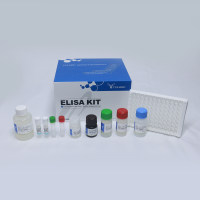Analyzing the Function of Tumor Suppressor Genes Using a Drosophila Model
互联网
互联网
相关产品推荐

Mouse Reactive Alzheimer's Disease Model Microglia Phenotyping IF Antibody Sampler Kit
¥500

促销中大鼠肿瘤坏死因子α(TNF-α)/Rat TNF-α/tumor necrosis factor (TNF superfamily,member 2)/Tnf;Tnfa;Tnfsf2;Tumor necrosis factor;Cachectin;TNF-alpha;Tumor necrosis factor ligand superfamily member 2;TNF-a) [Cleaved into: Tumor necrosis factor;membrane for/TNF/ELISA试剂盒
¥3420¥3800

Recombinant-Mouse-Intercellular-adhesion-molecule-2Icam2Intercellular adhesion molecule 2; ICAM-2 Alternative name(s): Lymphocyte function-associated AG-1 counter-receptor CD_antigen= CD102
¥11046

Recombinant-Xenopus-tropicalis-Transmembrane-protein-173tmem173Transmembrane protein 173 Alternative name(s): Stimulator of interferon genes protein; STING
¥11704

Tau Mouse Model Neuronal Viability IF Antibody Sampler Kit
¥500
相关问答

